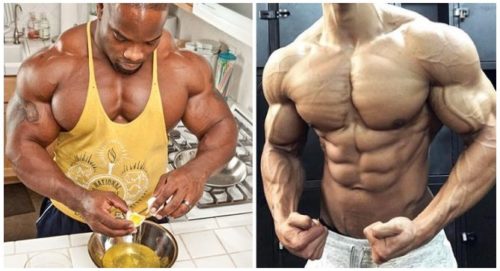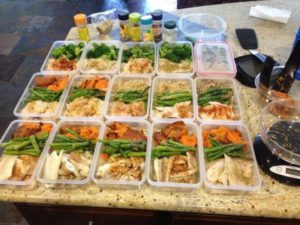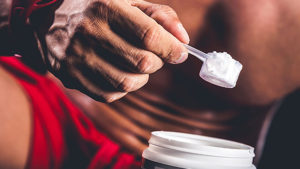If you are wondering if you should be bulking, then you should definitely be bulking. A lot of people make fun of the perma-bulkers but if you put your body through a period of intense muscle development, your gains will become stunningly better than now. This is a technique that has been in use for a long, long time and you can see it everywhere around you. Just look at the movies – Ryan Reynolds in “Blade Trinity”, Jason Momoa in “Conan” and Chris Hemsworth in “Thor” all bulked before they shot the movies. There is a lot of information on the internet about how to bulk, but in the end you can summarize it in these five points. Here’s how to bulk like a pro.
STEP 1: Find Out How Many Calories You Need to Maintain Your Body
This is your caloric maintenance number, the number of calories that your body needs to keep itself where it is right now. If you want to put on more muscle, you have to tell your body to grow more by sending it growth signals. You bulk using two main signals to your body – eating and working out. The first and foremost thing you should do before you start planning is get your calories in check. If you don’t do this, don’t even bother starting in the first place. If you want to put on weight, your body will need a large number of calories which are more than what it needs to maintain itself. It’s really simple – consume more than your body will burn!
So, let’s get to it. First, you need to determine your maintenance calories. This is where you break even with consumed and burned calories without gaining or losing any weight. Here’s how to do it:
- Use a calorie calculator. These are based on years of research and data and they will let your figure out your daily calorie needs.
- Eat the exact amount of calories that the calculator designated as your daily calorie need, for one week. Don’t change your routine or anything else, but check your weight before and after that week.
- If your weight hasn’t changed in that one week, do it for another week just to be sure. If your weight has increased, eat 250 fewer calories and do it for another week. If it has increased, eat 250 more calories per day and try it another week. You should be doing this until you find two consecutive weeks where your weight has not changed.
This means that you might need a month or maybe even two to prepare for your bulking period, but when you do prepare, you will have mastered the calorie numbers and you will be able to control what happens with the calories in your body.
STEP 2: Map Out Your Surplus
Now that you know how many maintenance calories you should eat, you can move on to the next phase – creating your bulking diet. You need to find the sweet spot that will let you get the best gains possible, because if you overeat, you will be putting on fat mass, but if you under-eat you will not be making as good a progress as you could be. The sweet spot you’re looking for is between 5% and 20% extra calories per day. If you eat with a 20% surplus, you will start getting fat and eating with a 5% surplus is the bare minimum for any muscle mass boost. If you eat somewhere between 5% and 10% surplus, you will optimize the lean muscle to fat tissue ratio, and if you eat at 10% surplus calories you will have the adequate amount of food to grow sustainably. Also, as it turns out, if you eat a 20% caloric surplus a day, you don’t get more lean muscle. Instead, you just get fatter.
STEP 3: Know What You Need to Eat!
Now that you’ve figured out how many calories you need to eat and determined your 5% to 10% caloric surplus, you need to know how you will actually ingest those calories into your system. You need protein, carbs and fats. Here’s how to divide them.
- PROTEIN. If you look it up, you will see that there is so much literature regarding protein intake that you could start reading right now and never finish even a percentage of it while you live. More or less, all of the studies come down to this – you need a gram of protein for every pound of bodyweight per day if you want to grow. Eat 1.5 grams of protein instead if you need to, but the norm is around 1 gram for every pound in the beginning.
- CARBOHYDRATES. Carbs have been well documented as well. The studies say that you should eat 2 grams of carbs for every pound of bodyweight per day, which should be somewhere between 45% and 55% of your daily caloric needs. If you work out for 2-3 hours daily, feel free to boost your carbs to 3 grams for every pound of bodyweight daily, which would be between 55% and 65% of your total caloric needs.
- FATS. You need fats as well, but they aren’t just energy – they are more of a utility macronutrient, which will let you bulk more easily. It’s easier to ingest the necessary amount, and to figure out what that is, just take your protein and carbs numbers together, subtract them from your daily calories and you will have the number of calories you need to consume in fats.
STEP 4: Know What Supplements You Need
If you want to start a bulking diet, chances are you think it’s gonna be all supplements and no fun. You couldn’t be more wrong. A bulking diet is based on the right food, with supplements added in to maximize the effect. Here are the supplements you will need for a good bulk.
- WHEY PROTEIN. When you get tired of eating steak, chicken breasts and fish, you will need to get some whey in your body. Also, whey shakes can help you ingest liquid calories which you might need urgently after training. There is no bulking period without whey protein.
- CREATINE. If you have a larger training volume, you will have better muscle mass gains. It’s that simple. Creatine has been proven to boost your training capacity and will boost the volume of your training as well. If you’re trying to increase your training volume and build muscle mass without taking creatine, you are definitely missing out.
- CAFFEINE. You will need caffeine for one simple reason – it works! It will help you train harder, so consider drinking a cup before working out.
STEP 5: Set Your Sleep Schedule
Sleep is an integral part of the muscle growth process and your body will not grow if you don’t sleep. Your body receives the signals that it needs to grow while training, but it only grows when it’s recuperating while you sleep. 8 hours is fine, but 10 is better because when you sleep there are a number of recovery and hormonal reactions in your body that grow your muscles.





Post your comment